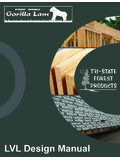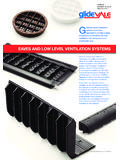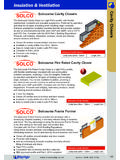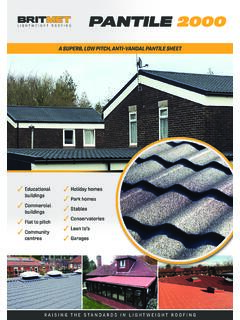Transcription of Shingle APPLICATION INSTRUCTIONS(July-22-2010)
1 APPLICATION INSTRUCTIONSASPHALT SHINGLESSECTION 1 GETTING READY FOR THE Tools and Storing Safety Caring for Your New RoofSECTION 2 PREPARATION, PROTECTION OF VULNERABLE AREAS & Drip & Rake VentilationSECTION 3 GENERAL General Directions A - Nail Requirements B - Cement C - Protective Tape D - APPLICATION on mansard and Steep Slope Roofs E - High Wind Warranty F - Cold Weather APPLICATION G - Installing Over Existing Layer of Shingles H - Eave Protection & Underlayment A - Eave Protection B - Shingle APPLICATION on Low Sloped Shingle APPLICATION on Standard Sloped Valley FlashingSECTION 5 LAMINATED Eclipse GL , Everest , HarmonySECTION 6 MERIDIAN (HR)
2 Hip & Ridge E-Z fold SECTION 4 THREE-TAB Mirage GS , Yukon SB , Dakota , RampartAPPLICATION INSTRUCTIONSASPHALT SHINGLES2 SECTION 1 GETTING READY FOR THE Tools and Storing Safety Caring for Your New - TOOLS AND MATERIALSA Tools : Tape measure ; Chalk line ; Carpenter s square ; Hammer (claw hammer, roofer s hatchet, or pneumatic nailer) ; Utility knife to cut roll roofi ng and felts ; Tin snips to cut metal fl ashing and shingles ; Caulking gun ; Notched trowel ; Old work gloves and nail apron ; Circular saw and chisel to repair or replace damaged decking ; Square-mouth shovel for removing old shingles; Pry-bar for lifting hard-to-reach shingles and fl ashings ; 8 mm or 10 mm (5/16 or 7/16 ) nylon or polypropylene rope to secure the ladder and use as a safety line ; Safety harness ; A strong, safe ladder or scaffolding ; Cutting board to prevent accidentally cutting through the Shingle into the roof below ; Waste receptacle ; Broom for cleaning up Materials : BP Shingles ; Galvanized roofi ng nails of proper length ; Asphalt Plastic Cement.
3 Eave protection (GRIPGARD, GRIPGARD SX or PROGARD ULTRA Waterproofi ng membrane, BP Smooth or Slate Surface Roll Roofi ng) ; Underlayment (GRIPGARD, GRIPGARD SX or PROGARD ULTRA Waterproofi ng Membrane, BP n 15 Asphalt Felt Plain, BP Standard Asphalt Sheathing or BP Shingle Base Underlayment) ; BP Slate Surface Roll Roofi ng, BP Mineral Surface Roll Roofi ng, GRIPGARD, GRIPGARD SX, PROGARD ULTRA or MINI PROGARD Waterproofi ng membrane for valley treatment or fl ashings ; roof ventilators. SECTION - STORING SHINGLESFrom the time of delivery to the time of their installation, the roofi ng materials may have to be stored.
4 To protect your investment and ensure optimal results, bear in mind these few recommendations: Store shingles on a fl at surface ; Don t store shingles in the hot sun or leave them exposed to bad weather; If the shingles must be stored outdoors, protect them with a tarpaulin or plastic sheet; Be sure to make a few holes in the sheets to allow for air circulation ; Don t store shingles in extreme cold, especially prior to cutting or bending ; Don t store the bundles directly on the ground; place them on a raised platform ; Never stack Shingle bundles more than m (4 ) - SAFETY CONSIDERATIONSThe roof can be a dangerous place to work, so read the following section carefully and take the necessary precautions to avoid any risk of accident.
5 The primary, and most obvious, danger is that of falling. If you have diffi culty walking on the roof , it is probably too steep for you to work on safely. First and foremost, make sure that you are fastened safely. A safety harness with a large snap hook can be obtained from your local tool rental center for this purpose. Fasten the harness around your waist and clip it to a nylon or polypropylene rope 8 mm to 10 mm (5/16 to 7/16 ) in diameter. The other end of the rope should be tied to a solid, immovable object on the other side of the roof . A strong tree or a 5 cm x 10 cm (2 x 4 ) board placed across the inside of a window frame provide reliable anchors for this purpose, but don t tie the rope to your car, TV antenna or chimney.
6 Make a series of non-slip loops, at m to m (4 to 6 ) intervals between your harness and the ridge. As your work progresses across the roof you can attach the safety harness to these loops. Use short lengths of hose or rubber to protect the rope from friction where it rubs against the ridge and AVOID ELECTROCUTION Keep ladders and other metal objects away from electrical wires and make sure you don t come into contact with the wires yourself ; Don t try to remove a TV antenna by yourself. Most antenna distributing companies will handle this for you, but if not, arrange to have somebody else help you and exercise extreme caution.
7 Above all, keep the antenna away from electrical WORKING WITH A LADDER Use a sturdy ladder and ; Make sure it extends at least 61 cm to 91 cm (2 to 3 ) above the roof level so that you can hold on to the rails while climbing on and off the roof ; Secure both sides of the ladder at the top and at the bottom ; Don t lean too far away from the ladder to reach the next section of roof . It is safer to move the SAFETY GUIDELINES Try not to work alone on the roof . If it is necessary to do so, at least let someone know ; Make sure that no one is standing under the roof where they could be hurt by falling objects ; Avoid wearing loose-fi tting clothing.
8 Do wear rubber-soled shoes and protective glasses ; Don t work on a wet roof . Ideally, the weather should be mild, dry and calm ; Make sure your ladder or scaffolding is set on a fi rm level base that is neither too muddy nor too dry ;SECTION 149510, St. Patrick Street, LaSalle (Quebec), Canada H8R 1R93703-101 Avenue , Edmonton (Alberta), Canada T5J 2K8If this APPLICATION instructions differ from the instructions on the packaging, this document is to be considered current. Please make sure to download the most up to date version of this document from the Building Products of Canada Corp.
9 Website . Please refer to local building codes for addition installation Products of Canada Corp. If you are working on a steep roof (slope of 6 /12 or more), it may be necessary to build footholds. This can be easily accomplished using a fl at board held in place with steel straps. On very steep slopes, a 4 cm x 9 cm (1 1/2 x 3 1/2 ) wood wedge can be placed under the board to provide a level foothold. The board can be moved around the roof as you work ; Make sure that tools and materials placed on the roof cannot slide off. Don t place heavy piles of shingles in one spot - spread the material around the roof to evenly distribute the weight ; Don t take any unnecessary - CARING FOR YOUR NEW ROOFC ongratulations!
10 You have bought the best shingles in the world. If you follow all the necessary steps, using high-quality premium materials and doing a professional job, you will be proud of your new roof . After the job is done, you will be able to relax knowing that your new dream roof will enhance the value and appearance of your home. Here are a few tips to ensure you get the best possible long-term performance from your new BP roof : Clean out the eaves troughs from time to time, especially if there are trees nearby. Don t let dead leaves, seeds, petals, pine needles and other debris clutter the eaves troughs ; Don t let rainwater from downpipes spill directly into a Shingle roof as water erosion may damage the surface of the shingles.











